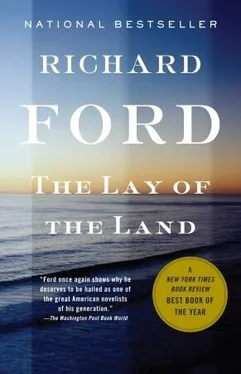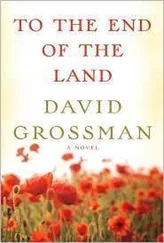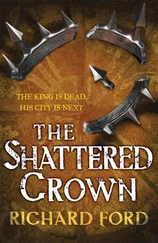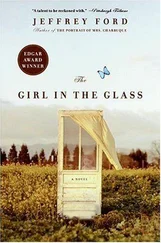I, of course, moved here for these very reasons: because I admired Sea-Clift’s face to the interested stranger — seasonal, insular, commuter-less, stable, aspirant within limits. There was no space to grow out to, so my business model pointed to in-fill and retrench, not so different from Haddam, but on a more human scale. My house-moving plan on Timbuktu is the perfect case in point. You could teach it over at Wharton. To me, commerce with no likelihood of significant growth or sky-rocketing appreciation seems like a precious bounty, and the opposite of my years in Haddam, when gasping increase was the sacred article of faith no one dared mention for fear of the truth breeding doubt like an odorless gas that suffocates everybody.
Mine, of course, is not the view of the Dollars For Doers Strike Council, who sit Monday mornings in the fire station bullpen and who’ve seen the figures and are charged to “transition” Sea-Clift into the “next phase,” from under-used asset to vitality pocket and full-service lifestyle provider using grassroots support. This, even though we all like it fine here. Permanence has once again been perceived as death.
This fall, after the summer down-tick — fewer visitors, fewer smoothies and tomato pies, fewer boogie-board and chalet rentals (I credit the election and the tech-stock slide) — new plans went on the table for revitalizations. The Council floated a town naming-rights initiative to infuse capital (“BFI, New Jersey” was seriously suggested, but met with a cold shoulder from citizens). A proposal came up to abandon the “seasonal concept” and make Sea-Clift officially “year-round,” only no one seemed to know how to do that, though all were for it until they figured out they’d have to work harder. There was support for dismantling a lighthouse in Maine and setting it on the beach, but regulations forbid new construction. The Sons of Italy offered to expand the Frank Sinatra contest to include a permanent “New Jersey Folk Traditions” exhibit to go on the Coastal Heritage Trail (no one’s taken this seriously). The most ambitious idea — which will take place, though not in my lifetime — is to reclaim acres of Barnegat Bay itself for revenue-friendly use: a human tissue — generator lab or possibly just a golf course. But no one’s identified partnering capital or imagined how to buy off wetlands interests. Though one day I’m sure a man will rollerblade from where the Yacht Club used to be across to the condom plant in Toms River without noticing that once a great bay was here. The only new idea that seems to be genuinely percolating is an Internet rental-booking software package (Weneedabreak.com) that’s worked in towns farther north, and that Mike’s all for. In all these visionings, however, my attitude’s the same: Quit fretting, keep the current inventory in good working order, rely on your fifties-style beach life and let population growth do its job the way it always has. What’s the hurry? We’ve already built it here, so we can be sure in time they’ll come. This is why I’m not on the Dollars For Doers anymore.
J ust ahead, at the left turn onto Timbuktu Street, I see the scheduled Turkey Day 5-K Sea-Clift-to-Ortley-and-back road race nearing its start time in front of Our Lady of Effectual Mercy RC church. A crowd — a hundred or so singleted body types — mingles on the cold grassy median right where I have to turn. The runners — string-thin men and identical females in weightless shorts, expensive-as-hell running shoes, numbered Turkey Day racing bibs and plastic water bottles — are dedicatedly goading themselves into road race mentality, stretching and twisting, prancing and bending and ignoring one another, hands on hips, heads down, occasionally erupting into violent bursts of in-place jogging to fire their muscles into exertion mode. They are, I have to say, a handsome, healthy, sinewy, finelylimbed bunch of sociopathic greyhounds. Most are in middle years, all obviously scared silly of serenity and death, a fixation that makes them emaciate themselves, punish their bones and brains (many of the women quit menstruating or having the slightest interest in sex) and cut themselves off from friend, foe and family — everyone except their “running friends”—in order to pad out along the dark early-morning streets of America, demonstrating sentience. My time in the USMC, three decades back, and in spite of what Ann says about my suitability, made me promise myself that if I got out alive, I’d never hasten a step as long as I lived, unless real life or real death was chasing me. I pretty much haven’t.
On the margins of the crowd are the usual wheelchair athletes — chesty, vaguely insane-looking, leather-gloved men and women strapped into aerodynamic chairs with big cambered wheels and abbreviated bodies like their owners. There are also spry oldsters — stiff, bent-over and balding octogenarians of both genders, ready to run the race with extinction. And set apart from these are the true runners, a cadre of regal, tar-black, starved-looking, genuine Africans — women and men both, a few actually barefoot — chatting and smiling calmly (two talk on cell phones) in anticipation of tearing all the neurotic white racers brand new Turkey Day assholes. For all the runners, it’s hopeful, I know; but to me it’s a dispiriting spectacle to witness on a morning when so much less should be strived for under a wide, pale-clouded and slightly pinkish sky. I feel the same way when I go in a hardware store to have a new tenant’s key cut and smell the cardboard and corrugated-metal and feed-store aromas of all the dervish endeavors a human can be busily up to if he’s worth a shit: recaulking that shower groin with space-age epoxies, insulating the weather-side spigot that always freezes, re-hanging the bathroom door that opens the wrong way and clutters the nice view down the hall that reveals a slice of ocean when the trees aren’t in leaf. It gives me the grims to think of what we humans do that no one’s life depends on, and always drives me right out the door into the street with my jagged new key and my head spinning. It’s no different from Mike’s idea of putting up magnum-size “homes” on two-acre lots with expectations of luring hard-charging young radiologists and probate lawyers who’d really be just as happy to go on living where they live and who need six thousand square feet like they need a bone in their nose. Neither am I sure that the second-home market, where I ply my skills, is immune from the same complaint.
Sea-Clift police are of course a presence, a pair of thick-necks in helmets and jodhpurs on giant white-and-black Kawasakis, waiting to be escorts. A green EMS meat wagon sits beyond the crowd at the curb, its attendants sharing a smoke and a smirk. The priest from Our Lady of Effectual Mercy, Father Ray, wearing his dress-down everyday white surplice, has mounted a metal stepladder at the curb and is using a bullhorn and an aspergill to bless the race and runners: May you not fall down and bust your ass; may you not tear your Achilles or blow out an ACL; may you not have an aneurysm in your aorta with no one to give you last rites; may you have a living will that leaves all to the RC Church; now run for your lives in the name of the Father, the Son, etc., etc., etc.
I need to make my turn here, cross the median cut and the white markings the race organizers have painted on the pavement. All the milling soon-to-be-racers give me and my Suburban the cloudy eye, as if I might be about to plow into them, cut a bloody swath right through. What’s this Suburban all about, their hard looks say. Do you need a boat that big? There oughta be a special tax on those. What’s with the window and the fucking tape? Is this guy local?
Читать дальше












